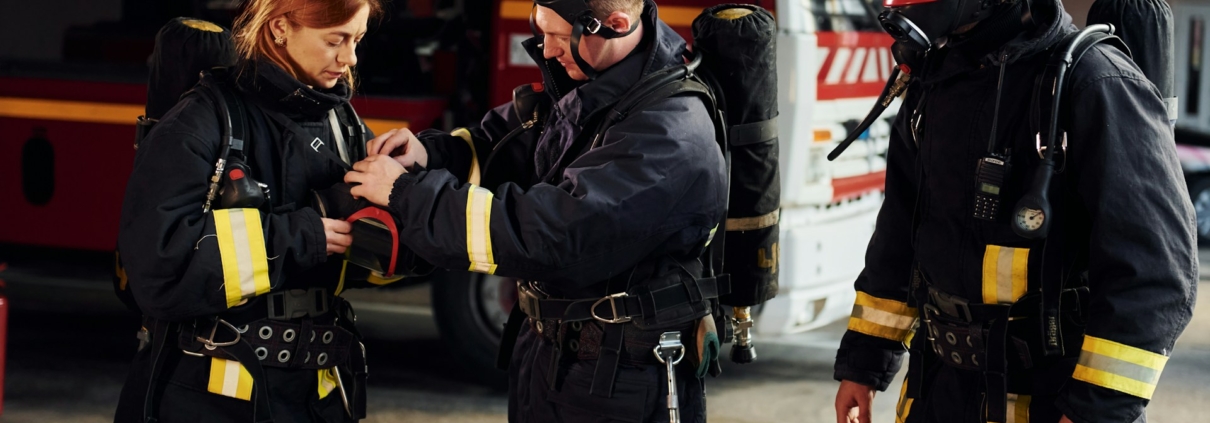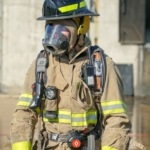Top Safety Tips For Operating Breathing Apparatus
Breathing apparatuses play a key role in ensuring safety, especially in situations where the air quality is compromised. These pieces of equipment are crucial for protecting individuals who work in environments with harmful gases, smoke, or low oxygen levels. Whether you’re a firefighter entering a smoke-filled building or a worker in a confined space, knowing how to operate a breathing apparatus effectively can make all the difference.
We’ll explore practical tips that help users operate breathing apparatuses safely. From understanding the equipment itself to knowing the best practices for maintaining and using it, these insights will prepare you to handle critical situations with confidence.
Understanding Your Equipment
Before using any breathing apparatus, it’s important to grasp the types available and their specific purposes. Generally, there are two main types: Self-Contained Breathing Apparatus (SCBA) and Supplied Air Respirators (SAR). SCBA is often used by firefighters and scuba divers, offering users independent oxygen sources. SAR, on the other hand, relies on a hose connecting the wearer to an outside air supply and is common in industrial settings.
Each breathing apparatus comes with several parts that serve specific functions:
– Cylinder or tank: Stores the air or oxygen supply.
– Facepiece: Covers the mouth and nose to provide a seal.
– Regulator: Controls the air flow.
– Harness: Holds the apparatus securely on the user’s body.
Knowing the function of each component can improve both safety and comfort in the field. For instance, imagine a situation where a construction worker is inspecting a tight underground space. In such a scenario, using the right apparatus ensures they have a sufficient air supply and maintain comfort throughout their task.
Understanding these basics is just the start. It’s vital to familiarize yourself with the equipment you’ll be using well before any emergency or operational use. Handling these devices with confidence stems from knowing how each part works — from the snug fit of the facepiece to the adjustments needed when donning the harness. Proper knowledge and training lead to effective operation, ensuring personal safety when facing hazardous conditions.
Pre-Use Checks
A thorough inspection of your breathing apparatus can prevent potential hazards. Before each use, examine the equipment for signs of wear or damage. This includes looking over the cylinder for any dents or leaks, checking the hose connections, and ensuring the regulator functions properly. Your safety might depend on these small checks that make a big difference.
Follow a simple checklist to make sure nothing is overlooked:
– Verify the facepiece is clean and free from cracks.
– Confirm the cylinder is at full capacity, providing enough air for the task.
– Inspect the harness for any frayed straps or broken buckles.
– Test the alarm system, if included, to ensure it will properly alert you when air levels are low.
Each check ensures that the equipment will work reliably during use. Regular inspections not only instil confidence but also mean you’re ready to react swiftly if problems arise. Imagine it like preparing for a bike ride — you wouldn’t pedal away without making sure the tyres are inflated and the brakes work. Similarly, conducting pre-use checks on your breathing apparatus confirms that you can count on it when conditions get tough.
Proper Usage Techniques
Donning a breathing apparatus correctly is just as important as the pre-use checks. Start by ensuring you wear the facepiece snugly. It should seal tightly against your face to prevent any air leaks. Adjust the straps evenly to avoid discomfort during extended use. Remember, a well-fitting facepiece is key to ensuring you breathe only clean air.
Here’s how to ensure a proper fit:
1. Place the facepiece over your nose and mouth, pulling the harness over your head.
2. Tighten the straps from the bottom up, making sure the mask sits evenly.
3. Conduct a seal check by blocking the air inlet and inhaling — if the mask pulls inward slightly, you’ve got a good seal.
Pay attention to your breathing technique as well. Breathe deeply and steadily to maximise the efficiency of your air supply and maintain comfort. Experienced users often find that consistent practice makes wearing and adjusting the equipment second nature, much like how you instinctively adjust a life jacket for a snug fit before launching into the water.
Maintenance and Storage
After use, care for your breathing apparatus meticulously to keep it in top shape for the next time it’s needed. Regular maintenance plays a huge role in extending the equipment’s lifespan and reliability. Clean the facepiece with warm, soapy water and dry it thoroughly. Check and replace any parts that are damaged or worn out.
Proper storage also matters:
– Store the apparatus in a clean, dry area away from direct sunlight and extreme temperatures.
– Ensure the cylinder is not left in a discharged state.
– Keep the equipment in a designated storage bag or case, free from dust and pollutants.
Following these storage guidelines prevents unnecessary wear and tear. It’s like caring for a favourite tool in your shed — when stored properly, it’s always ready to function perfectly when you need it.
Training and Practice
Understanding equipment and maintenance is vital, yet continuous training ensures you’re always ready to use your breathing apparatus effectively. Regular sessions fine-tune your skills, offering confidence during high-pressure situations. Emphasizing practice isn’t just about equipment familiarity; it highlights how quickly you react under stress.
Participating in training sessions in Perth will enhance your skills, keeping you prepared for whatever comes. Practicing equipment use refines techniques for the wear, seal adjustment, and emergency response. Compare it to rehearsing a dance. As frequent practice enhances performance, regular equipment use ensures proficiency.
Mastering breathing apparatus use means prioritizing regular, improved training. These sessions provide opportunities to try new techniques and optimize existing ones, cultivating preparedness. When you’re well-prepared, responding calmly and effectively in emergencies becomes natural, leading to safer and smoother operations.
To make sure you’re fully prepared when working with these essential tools, consider enrolling in specialised breathing apparatus training in Perth. Access Unlimited provides expert training that helps enhance your skills so you can respond confidently and safely in any critical situation. Investing in this training means you’ll be ready to face challenges head-on with the right techniques and knowledge.


